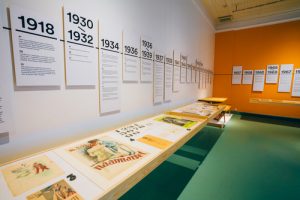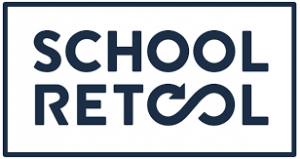 The last days of summer are ripe for a frantic, spontaneous trip to Washington, D.C. We’ve visited before, because my sister lives there; but what was different this time, was that we have a vivacious three-year-old. We had never seen monuments as deserted as we had at 7:30 in the morning.
The last days of summer are ripe for a frantic, spontaneous trip to Washington, D.C. We’ve visited before, because my sister lives there; but what was different this time, was that we have a vivacious three-year-old. We had never seen monuments as deserted as we had at 7:30 in the morning.
After our third day at the National Museum of Natural History, I realized that I was noticing things that I hadn’t in the days past, and I was surprised to find I was still learning new things. And this got me to thinking – how could I make my classroom more like a Smithsonian museum?
Independent Learning
Museums foster independent learning. My daughter really enjoyed roaming around and looking at things at her own pace. How might I have more interesting information at the ready, in my classroom? What could I have up or around in my room to help self-directed learning happen more? (Even the plants outside the museums are labeled with the scientific names.) How might I leverage technology to help me provide some interesting sites that students could look at on their own?
Ideas:
- Museum-like placards in books or around the classroom library, inviting readers into different genres or books or author tid-bits.
- QR-Codes around the room with links to different websites that promote collaborative writing, reading, author sites, self-publishing, NaNoWriMo, or other cool new wonderings.
- Have interesting quotes or information around the room that I change and update — or put students in charge of the alteration.

Sparking Curiosity
What happens when I press this button? What is around the corner in that dark, spooky hallway? Who are those people in white lab coats behind the glass looking through microscopes?
The questions and wonderings of my preschooler were endless! What kinds of things will grab the attention of my middle school students? Could I have up different questions, artwork, or inventions that tie into my units of study somehow? What visuals or puzzles could I have up that contribute to students’ knowledge of what we are studying in each unit, or are just plain word-fun?
Ideas:
- Hang Harris Burdick photos — or other strange images or objects (estate sale finds) — with a poetry or sentence starter.
- Hang a Pro/Con stance that students could consider or debate, in writing or verbally, at the end of each class or week.
- Always have a different copy of a word puzzle or brain teaser up for students to look at or work on.
Different Levels of Knowledge
My husband, daughter, and I all enjoyed our time at the museum. We each left with a different knowledge base than we had before. Visuals and audio were more important to my daughter’s learning. Words and graphs spoke more to my husband and me.
In class, what metaphors would fit well when trying to explain different parts of a unit?
Ideas:
 Rethink mini-lesson charts to include drawings and visual component.
Rethink mini-lesson charts to include drawings and visual component.- Flip mini-lessons so that they are available online for homework viewing. Maybe have an interactive piece to them – or offer them as a supplement for students who need more time to process or think through the material.
- Use music, video, popular culture more in quick writes with students.
Increase Engagement
From picture boards with red buttons to press, to digital display screens, to real-live bugs you can touch, my three-year-old was really enjoying all of the interactive features of a museum. That had me wondering: In my classroom, what could I have hanging from the ceiling? What spaces in my room, where students congregated, could house some unique, hands-on aspects of literacy? How might I make my bulletin boards more engaging?
Ideas:
- Create a graffiti wall of favorite lines from books that students have read.
- Rethink bulletin boards to always include some level of interactivity. Maybe include an extension into technology – like six-word memoir bulletin board with special hashtags.
- Offer different writing implements from past ages that kids could touch or use.
I know that museums have bigger budgets — and larger sources of information and more people working for them. But I can still try to harness the power of a good museum. I just need to think about what questions or visuals will challenge and engage my students, present lots of different viewpoints and interesting ideas that they might want to talk or write about, and be innovative in how I represent these things in my classroom.
 Caroline Thompson (@TeacherThompson) taught middle school ELA for twelve years in Lake Orion before becoming a stay-at-home mom. She supports AARI teachers for Oakland Schools as an independent literacy consultant in the areas of digital media, professional development, and non-fiction resources. Caroline is a Reading and Writing Workshop advocate, a 2008 Oakland Writing Project Teacher Consultant, and a 2009 Oakland County Outstanding Teacher of the Year Nominee. She has a BA in English from Michigan State University and a Masters in the Art of Teaching Reading from Oakland University. She lives in Berkley, Michigan with her husband and their three year old daughter.
Caroline Thompson (@TeacherThompson) taught middle school ELA for twelve years in Lake Orion before becoming a stay-at-home mom. She supports AARI teachers for Oakland Schools as an independent literacy consultant in the areas of digital media, professional development, and non-fiction resources. Caroline is a Reading and Writing Workshop advocate, a 2008 Oakland Writing Project Teacher Consultant, and a 2009 Oakland County Outstanding Teacher of the Year Nominee. She has a BA in English from Michigan State University and a Masters in the Art of Teaching Reading from Oakland University. She lives in Berkley, Michigan with her husband and their three year old daughter.

 Like most teachers in Michigan, last week I spent two days proctoring the state’s SAT and ACT Work Keys tests. I collected the box of tests, read from the script, made sure there were no errant marks, and was generally absolutely bored.
Like most teachers in Michigan, last week I spent two days proctoring the state’s SAT and ACT Work Keys tests. I collected the box of tests, read from the script, made sure there were no errant marks, and was generally absolutely bored.  My earliest “hacks” came when I moved the focus away from the teacher, me, as the primary audience for students’ writing, and
My earliest “hacks” came when I moved the focus away from the teacher, me, as the primary audience for students’ writing, and  Rick Kreinbring teaches English at Avondale High School in Auburn Hills, Michigan. His current assignments include teaching AP Language and Composition and AP Literature and Composition. He is a member of a
Rick Kreinbring teaches English at Avondale High School in Auburn Hills, Michigan. His current assignments include teaching AP Language and Composition and AP Literature and Composition. He is a member of a  We hear it all the time: ELA is frustrating and maybe an easier subject, because “there’s no right answer.” It’s all argument and evidence. Math and science, on the other hand . . . they’re objective. Who can argue 2+2, or that the sun is 93 million miles away?
We hear it all the time: ELA is frustrating and maybe an easier subject, because “there’s no right answer.” It’s all argument and evidence. Math and science, on the other hand . . . they’re objective. Who can argue 2+2, or that the sun is 93 million miles away? My colleagues and I have been using
My colleagues and I have been using